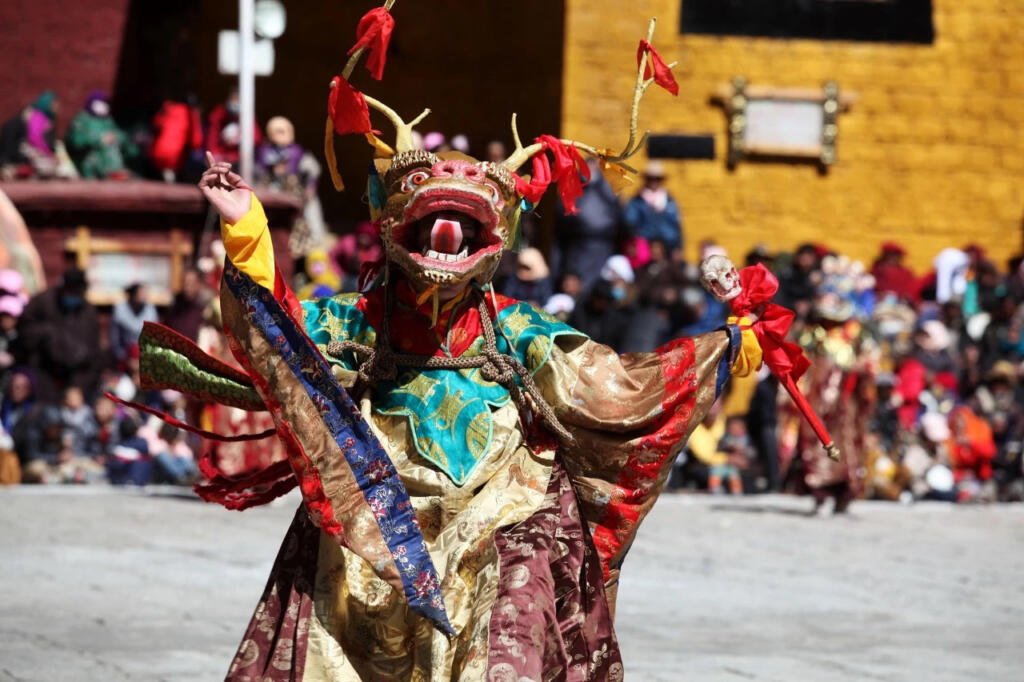Nestled at the foot of Benri Mountain, south of the bustling Bayi District in Linzhi, stands the venerable Sekar Dunchen Monastery. Known in Tibetan as “Gokya Gonchen,” which translates to “Great Divine Eagle Monastery,” this site, commonly referred to as Sekar Monastery, is among the most distinguished Bon religious institutions in Tibet. Established in 1333 by the devout practitioner Topden Rampa Druseb, the monastery boasts a history spanning over 1,200 years.
Though it once fell into disuse, Sekar Monastery has since flourished anew, housing sacred effigies of Bon master Shenrab Miwoche, Tara, and Ramjazuise himself. Each year, from the 13th to the 15th day of the fourth Tibetan month, the monastery celebrates the “Jangchu Festival” (meaning “Eagle Worship Festival”), a practice that has been recognized as part of Tibet’s fourth batch of autonomous regional intangible cultural heritage.

The Legend of the Divine Eagle
Legend has it that upon the death of Dondun Ramjazuise, a majestic eagle appeared to guard his remains. On the 13th day of the fourth Tibetan month, as devotees commemorated the completion of Ramjazuise’s stupa with a ceremony to enshrine his body, the eagle cried out, nodded to those gathered, and circled the stupa thrice before flying away. This led believers to regard the eagle as the embodiment of Dondun Ramjazuise, prompting the renaming of the monastery to “Great Divine Eagle Monastery.”
The annual “Jangchu Festival” stems from this legend, with the divine eagle believed to revisit the stupa each year during the festival to receive offerings. This event has evolved into the yearly “Boer Festival,” drawing Bon followers from Chamdo, Nakchu, Ali, Shigatse, as well as regions like Sichuan, Qinghai, and Gansu to pay homage. In the past, Bon practitioners from Bhutan and Sikkim also participated in this vibrant pilgrimage, circling the sacred mountain and contributing to the festival’s lively atmosphere.
Visiting Sekar Dunchen Monastery: A Journey into Bon Spirituality
- Getting There: Sekar Dunchen Monastery is situated approximately 45 km south of Bayi Town, making it an accessible spiritual retreat for those exploring the Linzhi region.
- Festival Highlight: Don’t miss the opportunity to experience the “Qiangqu Festival,” a unique celebration of devotion, heritage, and community that showcases the deep-rooted spirituality of the Bon tradition.
Sekar Dunchen Monastery invites visitors to immerse themselves in the profound legacy and cultural richness of Tibet’s Bon religion, offering a glimpse into the enduring faith and traditions that have shaped the spiritual landscape of the region.
